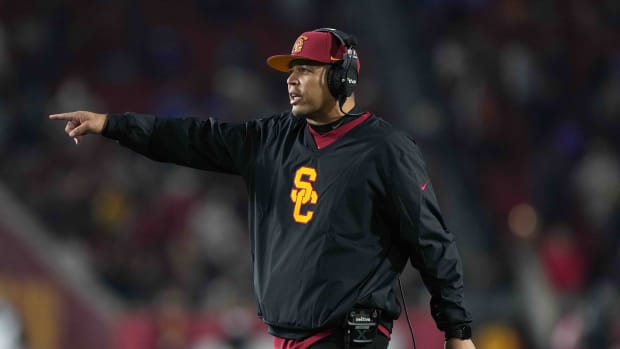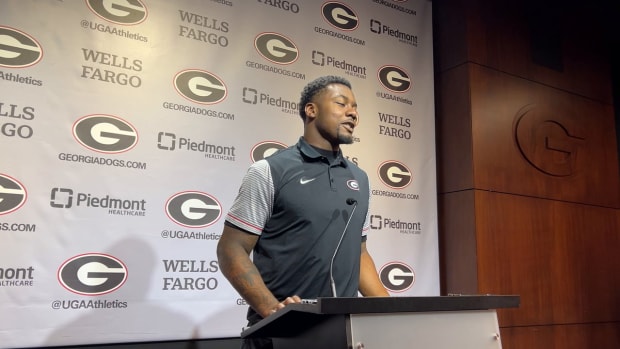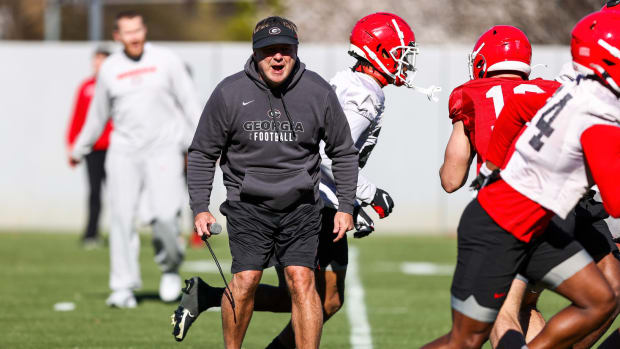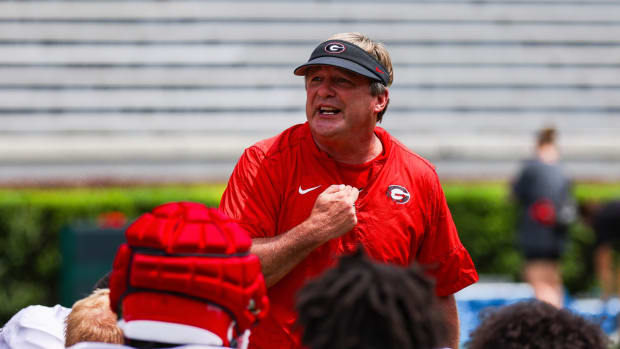Georgia Football: How Much Will the Offense Actually Change
The 2019 Georgia Football team finished 4th in the final AP rankings, and of the top 25 teams, only two (Iowa & Cincinnati) scored fewer points per game. So, to say the Bulldogs' success came via their defense is an understatement.
Of the six national championships since the College Football Playoff system was installed during the 2014-15 season, the victorious team has scored an average of 39.0 PPG. Needless to say, in today's brand of college football you're going to need to score to win. And score a lot.
So, how have teams gone about scoring as many points as they have, and will the Georgia offense actually change?
There are a lot of contributing factors. Football traditionalists will blame the RPO, or the "Air Raid" offenses for the scoring increase. When in reality, today's brand of football is about space and pace.
Time of Possession has become irrelevant
Spread out the defense, play fast, and drive the ball down the field. That is the modern college football offense. In fact, Georgia was one of just two Power-5 teams ranked in the top 20 in Time of Possession this season that won at least 10 games.
The case study for offensive transformation is obviously LSU. In 2018 they ran the ball 43.0 times per game. And were 14th in the country in Time of Possession, running over 72 offensive plays per game.
In 2019, the Tigers ran the ball 33.9 times per game and were ranked 53rd in Time of Possession this season. They increased their offense production by 166 yards per game and led the nation in scoring while running just 62 offensive plays per game.
Georgia's numbers on offense in 2019 look rather similar to that of LSU in 2018 before the arrival of the passing game guru, Joe Brady.
| Team | Runs Per Game | Passes Per Game | Yards Per Game | Points Per Game |
|---|---|---|---|---|
2019 UGA | 37.1 | 29.6 | 408.9 | 30.8 |
2018 LSU | 43.0 | 29.8 | 402.1 | 32.4 |
Sure, all the numbers make sense, but they are just numbers. How did LSU manage to score a full 16 points per game more while running ten fewer plays? Well, they drove the ball downfield constantly.
LSU was number one in explosive drive rate this season - scoring drives averaging at least 10 yards per play. 35.6% of their scoring drives averaged at least 10 yards per play. For comparison, Georgia was 59th at just 14.2%.
Of course, a lot of that has to do with the personnel at LSU. After all, they did have two 1,000 yard receivers and a quarterback that just had quite possibly the greatest statistical season in the history of college football.
However, it's not like Georgia doesn't have the pieces in place to make a similar leap in 2020. But how?
Insert Todd Monken
Todd Monken's history would tell you that he's a pass-first coordinator. From Oklahoma State to his time at Southern Miss and all the way up to the big leagues with the Bucs and Browns, his offenses have varied in terms formations, based on personnel, with one goal in mind... Win through the air.
And whether or not you're handing the ball off or throwing the ball, the objective is to get your best players in space with the ball in their hands.
Monken's offense is a no fear brand of play calling. If it's 3rd & 15 don't expect a half-back draw. Expect Jamie Newman to be dropping back and being asked to drive the ball downfield. First downs could become passing downs for the first time at Georgia. Playing for the field goal could be no more, but all of that is dependent upon the head man.
It took Nick Saban quite a while to bend to the likes of the true spread system, but even he knows you have to play at least 15 games to win a national title in today's system. Which means when the second week of January arrives and you're playing for a national title, the odds that your defense is going to be fit and ready to hold a team like Clemson or LSU to 14 points is a risky proposition.
This hire from Smart is the first sign of a willingness to change. The very next sign will probably come when he's faced with a 3rd & 10 at the opponent's 27-yard line. Does he tell his coordinator to protect the three points, or does he let the bullets fly? Only time will tell.




